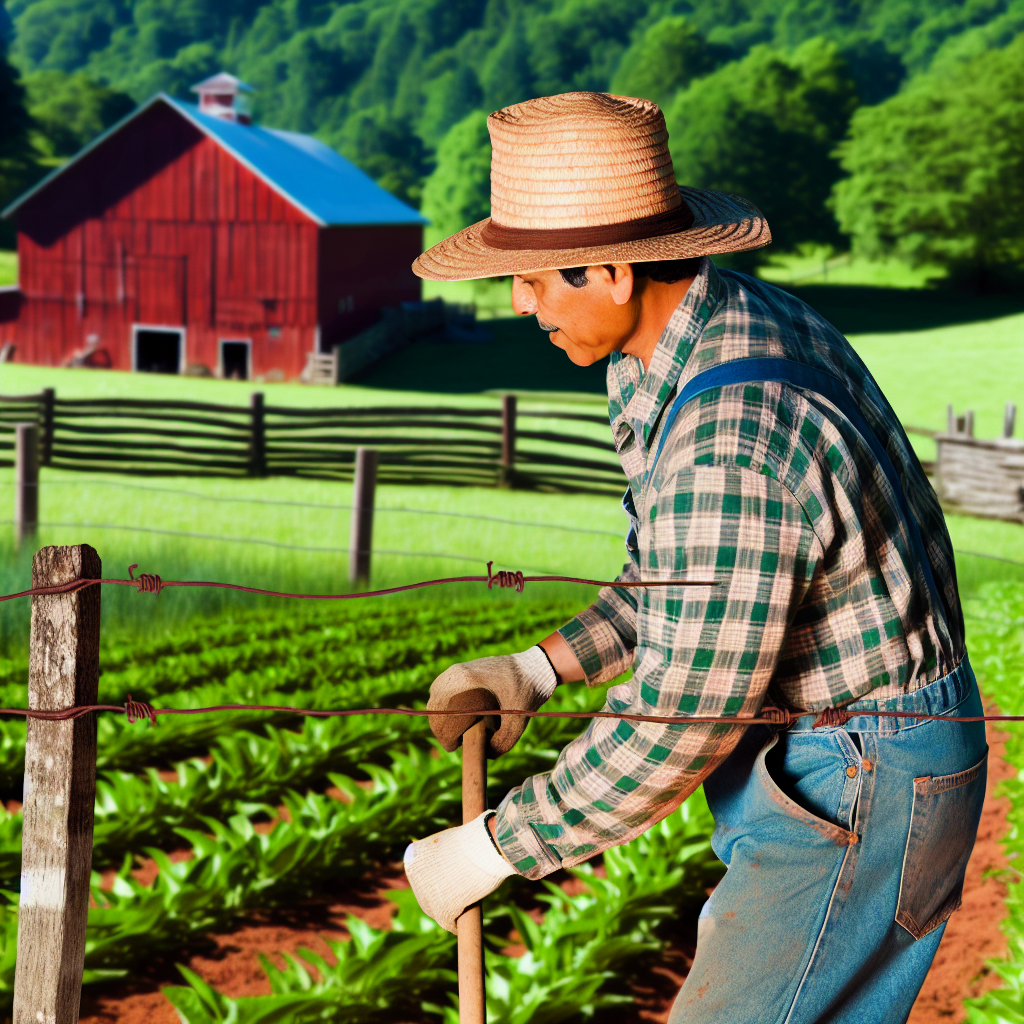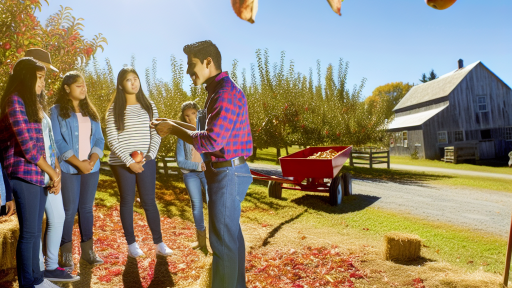Understanding Community Supported Agriculture and its Role in Organic Farming
Defining Community Supported Agriculture
Community Supported Agriculture, or CSA, connects consumers directly with local farmers.
This relationship cultivates a sense of community around food production.
Members of a CSA typically pay in advance for a share of the harvest.
As a result, farmers gain financial support at the start of the season.
In exchange, members receive fresh produce regularly throughout the season.
The Benefits of CSA for Organic Farmers
CSAs provide a reliable market for organic products.
They encourage farmers to grow a diverse array of crops.
This diversity helps improve soil health and reduce pest populations.
Additionally, CSAs foster greater community engagement in local farming efforts.
The Role of Consumers in CSA
Consumers play a critical role in the success of CSAs.
By purchasing shares, they directly support sustainable farming practices.
This support empowers farmers to stay committed to organic methods.
Moreover, consumers often engage in educational activities organized by the CSA.
They learn about farming techniques and seasonal crop cycles.
Challenges Faced by CSA Farmers
Despite the advantages, CSA farmers face challenges.
Transform Your Agribusiness
Unlock your farm's potential with expert advice tailored to your needs. Get actionable steps that drive real results.
Get StartedOne common issue is balancing the crop yield with consumer demand.
Unpredictable weather can affect crop production each season.
Farmers must also navigate logistical challenges in distribution.
Lastly, marketing their CSA effectively requires time and creativity.
Best Practices for Successful CSAs
Successful CSAs measure their growth and adapt accordingly.
Farmers should communicate regularly with members about their plans.
Offering diverse share options can attract a wider audience.
Implementing feedback loops enhances the CSA experience for all involved.
Finally, incorporating community events fosters a loyal membership.
Choosing Suitable Crops for CSA Programs in an Organic Farming Context
Understanding Community Supported Agriculture
Community Supported Agriculture connects farmers with consumers directly.
This relationship fosters a shared commitment to sustainable practices.
Moreover, it supports local economies and builds community ties.
Selecting the Right Crops
Choosing crops for CSA programs requires careful consideration.
First, understand your local climate and soil conditions.
Next, assess market demand for specific fruits and vegetables.
Additionally, consider crop rotation and diversification practices.
Factors Influencing Crop Selection
- Seasonality: Choose crops that thrive in your growing season.
- Market Preferences: Identify popular crops in your community.
- Pest Resistance: Select varieties that naturally deter pests.
- Nutritional Value: Opt for nutrient-dense crops to attract health-conscious consumers.
Engaging Your Community
Involve community members in the crop selection process.
Survey them to gather information on their preferences.
Also, host workshops and tastings to educate about available options.
Building a Crop Schedule
Create a planting calendar based on the selected crops.
Include timelines for sowing, growing, and harvesting.
This schedule helps manage expectations and ensures variety throughout the season.
Maintaining Crop Health
Healthy crops result in higher yields and better quality produce.
Implement organic pest management strategies to protect your plants.
Showcase Your Farming Business
Publish your professional farming services profile on our blog for a one-time fee of $200 and reach a dedicated audience of farmers and agribusiness owners.
Publish Your ProfileUtilize cover crops to enhance soil health and prevent erosion.
Monitoring and Adjusting Practices
Regularly monitor crop health and growth conditions.
If necessary, adjust practices to optimize production.
This might include altering watering schedules or implementing new organic methods.
Implementing Sustainable Soil Management Practices for Healthy Crop Production
Importance of Soil Health
Healthy soil is essential for robust crop production.
It supports plant growth and increases biodiversity.
Moreover, it improves water retention and nutrient availability.
Organic Matter Addition
Adding organic matter boosts soil health significantly.
Compost and well-rotted manure are excellent choices.
These amendments improve soil structure and fertility.
Consequently, they enhance microbial activity in the soil.
Crop Rotation Strategies
Implementing crop rotation promotes nutrient diversity.
Rotate crops to break pest and disease cycles.
Furthermore, it helps in managing soil fertility effectively.
Consider alternating deep-rooted and shallow-rooted plants.
This method improves overall soil health and structure.
Cover Cropping Benefits
Cover crops play a vital role in soil conservation.
They prevent erosion and suppress weed growth.
Additionally, cover crops can enhance soil organic matter.
Choose legumes to fix nitrogen in the soil.
Minimizing Tillage
Reducing tillage preserves soil structure and health.
It maintains beneficial microorganisms in the soil.
No-till or reduced-till methods can reduce erosion.
These practices also conserve moisture effectively.
Utilizing Organic Fertilizers
Organic fertilizers enrich the soil without harmful effects.
They release nutrients slowly, benefiting plant growth.
Examples include bone meal, fish emulsion, and seaweed extract.
These alternatives improve soil biology and fertility over time.
Monitoring Soil Health
Regular soil testing is crucial for sustainable farming.
It helps farmers understand soil nutrient levels and pH.
Additionally, monitoring aids in making informed decisions.
Implement a schedule for consistent soil assessments.
Community Engagement and Education
Engaging local communities enhances sustainable practices.
Host workshops to educate members about soil health.
Share success stories to inspire sustainable farming methods.
Encourage collaboration among local farmers for knowledge sharing.
Uncover the Details: Exploring Agri-Tourism: Benefits for Modern Farmers
Building and Maintaining Healthy Ecosystems with Crop Rotation and Diversity
The Importance of Crop Rotation
Crop rotation enhances soil fertility significantly.
It prevents the depletion of specific nutrients.
Furthermore, this method disrupts pest and disease cycles.
Showcase Your Farming Business
Publish your professional farming services profile on our blog for a one-time fee of $200 and reach a dedicated audience of farmers and agribusiness owners.
Publish Your ProfileBy rotating crops regularly, farmers can maintain ecosystem balance.
Implementing Crop Diversity
Diverse crops contribute to a more resilient ecosystem.
They support a variety of beneficial insects and wildlife.
Using different plant species reduces pest outbreaks.
Moreover, each crop type contributes uniquely to soil health.
Strategies for Successful Crop Rotations
Plan your rotations based on crop families.
Utilize legumes to fix nitrogen in the soil.
Combine deep and shallow rooting plants for better nutrient access.
Monitor soil health regularly to adjust your strategy as needed.
Challenges and Solutions
Some farmers may struggle with planning rotations effectively.
Utilizing technology can streamline this process.
Additionally, seeking advice from experienced peers is beneficial.
Embracing flexibility in planning can lead to better outcomes.
Building a Supportive Community
Community gardens can promote knowledge sharing and resource exchange.
Engaging with local agricultural groups enhances learning opportunities.
Support from fellow farmers fosters commitment to diversity.
Ultimately, collaboration leads to thriving ecosystems for all.
Find Out More: Permaculture Strategies For Sustainable Farming
Utilizing Organic Pest Management Strategies to Protect Crops
Understanding Organic Pest Management
Organic pest management focuses on natural solutions.
This approach minimizes chemical pesticide use.
Farmers prioritize the health of crops and the environment.
Additionally, they aim to enhance biodiversity on their farms.
Identifying Common Pests
First, familiarize yourself with the pests affecting your crops.
Aphids and caterpillars are commonly found in organic farms.
Moreover, spider mites can be a significant concern.
Regular monitoring helps in early identification of these pests.
Utilizing Beneficial Insects
Beneficial insects can naturally control pest populations.
Ladybugs are excellent for managing aphids effectively.
Furthermore, lacewings can help combat mealybugs and thrips.
Introduce these insects to maintain a balanced ecosystem.
Implementing Crop Rotation
Crop rotation disrupts pest life cycles effectively.
This technique prevents pests from establishing themselves in the soil.
Furthermore, it enhances soil fertility and health.
Plan your crop rotation strategy based on pest patterns.
Using Organic Sprays
Organic sprays serve as an effective pest deterrent.
Neem oil and insecticidal soap are popular options.
Apply these sprays during the early morning or late afternoon.
Always follow the product instructions for safe application.
Maintaining Healthy Soil
Healthy soil contributes to strong, resilient crops.
Implement practices like composting and cover cropping.
Showcase Your Farming Business
Publish your professional farming services profile on our blog for a one-time fee of $200 and reach a dedicated audience of farmers and agribusiness owners.
Publish Your ProfileThese practices enhance soil fertility and moisture retention.
Healthy plants are less susceptible to pest infestations.
Encouraging Biodiversity
Biodiversity is key to a thriving organic farm.
Plant a variety of crops to attract beneficial insects.
Incorporate native plants to create a balanced ecosystem.
Diverse planting also reduces pest outbreaks significantly.
Discover More: Supporting Youth Agriculture Through School Programs

Engaging the Community: Best Practices for Member Communication and Education
Building Strong Communication Channels
Effective communication is vital for successful community-supported agriculture.
Start by establishing multiple platforms for interaction.
Utilize email newsletters to keep members updated.
Also, consider social media for real-time engagement.
Encourage regular feedback to understand member needs.
Regular surveys can reveal preferences and concerns.
Fostering Educational Opportunities
Education enhances member loyalty and involvement.
Offer workshops on sustainable farming practices.
Invite local experts to share their knowledge regularly.
Additionally, provide resources like guides and videos.
Conduct farm tours to connect members with the land.
Activities can showcase continuous learning and growth.
Creating Community Involvement
Involve members in farm activities for deeper engagement.
Organize volunteer days for hands-on experience.
Also, encourage members to participate in decision-making.
Facilitate discussions on crop selection and planting schedules.
These actions build a sense of ownership and pride.
Sharing the Harvest
Sharing the bounty strengthens community bonds.
Host potlucks to celebrate harvests and share recipes.
Encourage members to exchange their culinary creations.
Furthermore, share produce in unique ways.
Consider creating a “members only” section for recipe exchanges.
Utilizing Storytelling in Communication
Storytelling enhances the emotional connection to farming.
Share personal anecdotes from the farm regularly.
Highlight member experiences and testimonials.
These narratives create a vibrant community atmosphere.
Use blogs and videos to tell these compelling stories.
Encourage members to share their journey with the CSA.
Explore Further: Farm-To-Table Ethical Supply Chain
Developing a Seasonal Planting Calendar for CSA Subscribers
Importance of a Seasonal Calendar
A seasonal planting calendar is vital for effective community supported agriculture.
This tool enhances planning for crop rotation and harvest times.
Moreover, it helps maintain a steady supply for CSA subscribers.
Key Components of the Calendar
- Planting Dates
- Harvest Periods
- Crop Rotation Plans
- Subscriber Preferences
Incorporating planting dates ensures timely sowing.
Showcase Your Farming Business
Publish your professional farming services profile on our blog for a one-time fee of $200 and reach a dedicated audience of farmers and agribusiness owners.
Publish Your ProfileHarvest periods indicate when subscribers can expect fresh produce.
Crop rotation plans promote soil health and diversity.
Additionally, knowing subscriber preferences tailors offerings to their tastes.
Creating the Planting Calendar
To create the calendar, start by researching local climate conditions.
Identify the optimal planting dates for various crops.
Next, determine the length of the growing season.
Longer seasons allow for a broader selection of crops.
Incorporate local and seasonal trends to enhance appeal.
Engaging with Subscribers
Communicate the calendar with your CSA subscribers regularly.
Share updates on upcoming crops and what they can expect.
Encourage feedback to improve future planting decisions.
This interaction fosters a sense of community and customer loyalty.
Review and Adjust
Regularly review the planting calendar’s effectiveness.
Adjust the schedule based on weather conditions and crop performance.
Flexibility allows for adaptation to unforeseen challenges.
This practice helps ensure the continued success of your CSA.
Maximizing Yields: Techniques for Efficient Space and Resource Utilization on Organic Farms
Understanding Crop Rotation
Crop rotation plays a vital role in organic farming.
This practice helps maintain soil fertility and structure.
Furthermore, it reduces pest and disease pressure.
By rotating crops, farmers use nutrients more effectively.
Implementing Companion Planting
Companion planting maximizes garden space.
This technique pairs compatible plants to support growth.
For example, tomatoes and basil thrive together.
Additionally, this method can deter pests naturally.
Utilizing Vertical Gardening Techniques
Vertical gardening optimizes limited space effectively.
This approach allows plants to grow upwards.
Farmers can use trellises, poles, and walls for support.
Moreover, it increases air circulation around plants.
Maximizing Pollinator Opportunities
Encouraging pollinators boosts crop yields significantly.
Farmers can plant flowers to attract beneficial insects.
Additionally, providing habitats supports pollinator populations.
Healthy pollinator populations lead to better fruit and seed set.
Implementing No-Till Practices
No-till farming conserves soil structure and moisture.
This method minimizes soil erosion and compaction.
Furthermore, it promotes beneficial microbial activity.
Farmers can use cover crops to enhance soil health further.
Incorporating Organic Mulching
Mulching conserves moisture and suppresses weeds efficiently.
Organic materials such as straw or wood chips work well.
Additionally, mulching adds nutrients back to the soil.
Ultimately, it creates a healthier growing environment.
Showcase Your Farming Business
Publish your professional farming services profile on our blog for a one-time fee of $200 and reach a dedicated audience of farmers and agribusiness owners.
Publish Your ProfileWater Management Techniques
Effective water management is crucial for organic farms.
Farmers can utilize drip irrigation systems to conserve water.
This method delivers water directly to plant roots.
Moreover, rainwater harvesting systems can supplement irrigation needs.
Monitoring Soil Health
Regular soil tests identify nutrient deficiencies.
This information helps tailor fertilization strategies.
Additionally, farmers should monitor pH and organic matter levels.
Healthy soil is fundamental for maximizing yields.
Adopting Integrated Pest Management
Integrated pest management focuses on sustainable pest control.
This approach combines biological, cultural, and chemical methods.
It reduces reliance on synthetic pesticides significantly.
Farmers can use beneficial insects to control pest populations.
Additional Resources
Leading the Farm to Table Movement in Greenville SC – Farm to …




